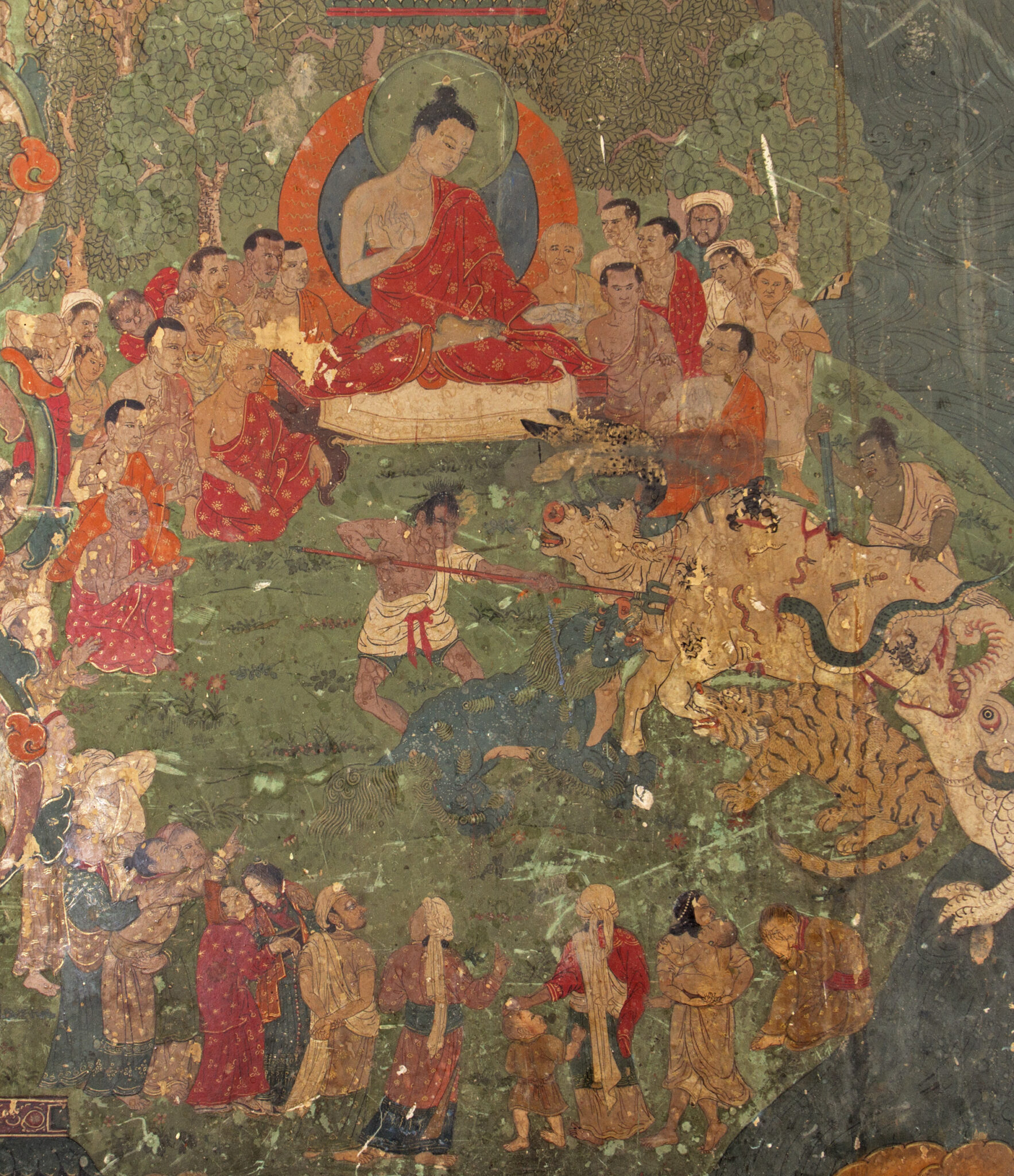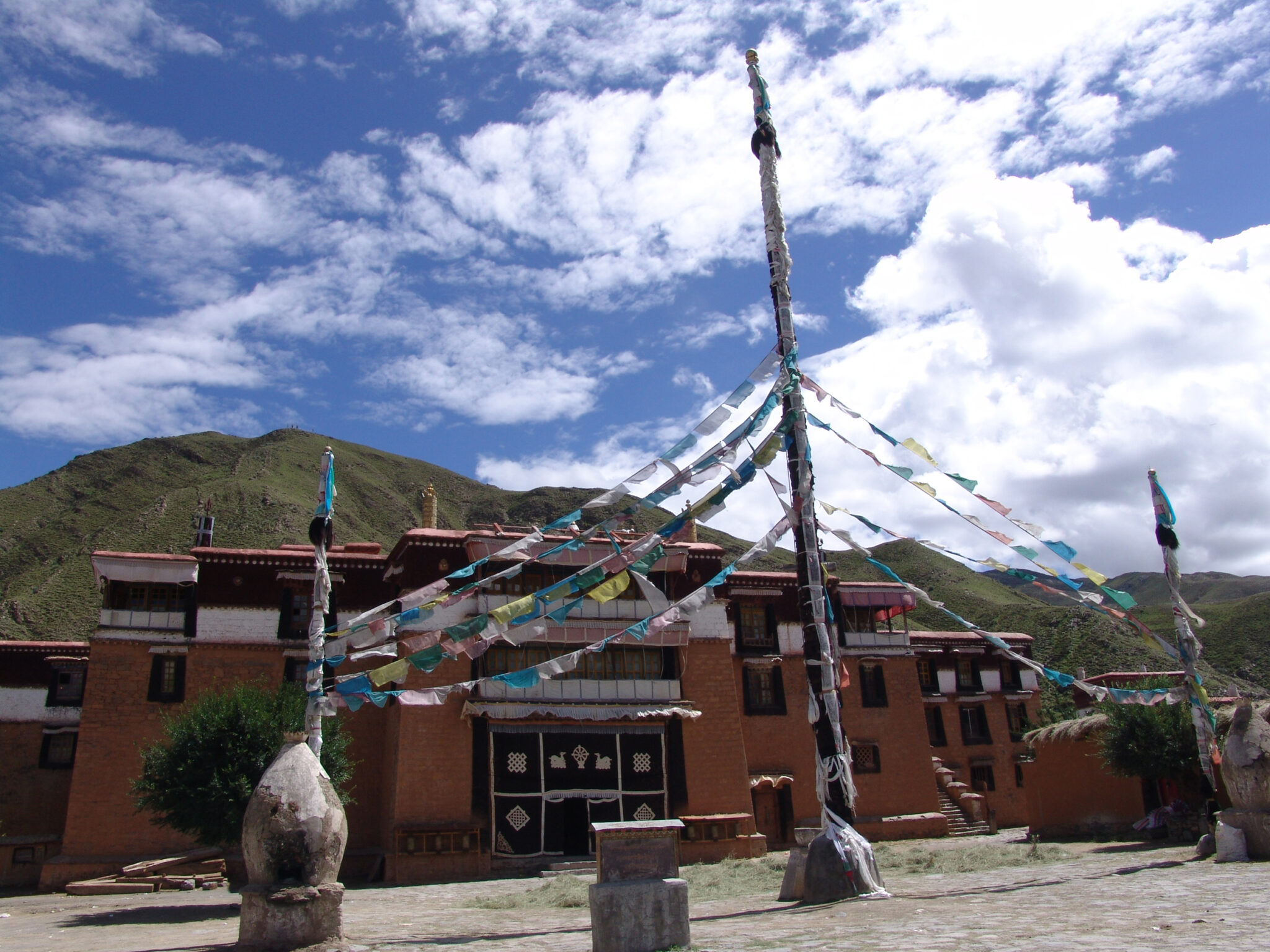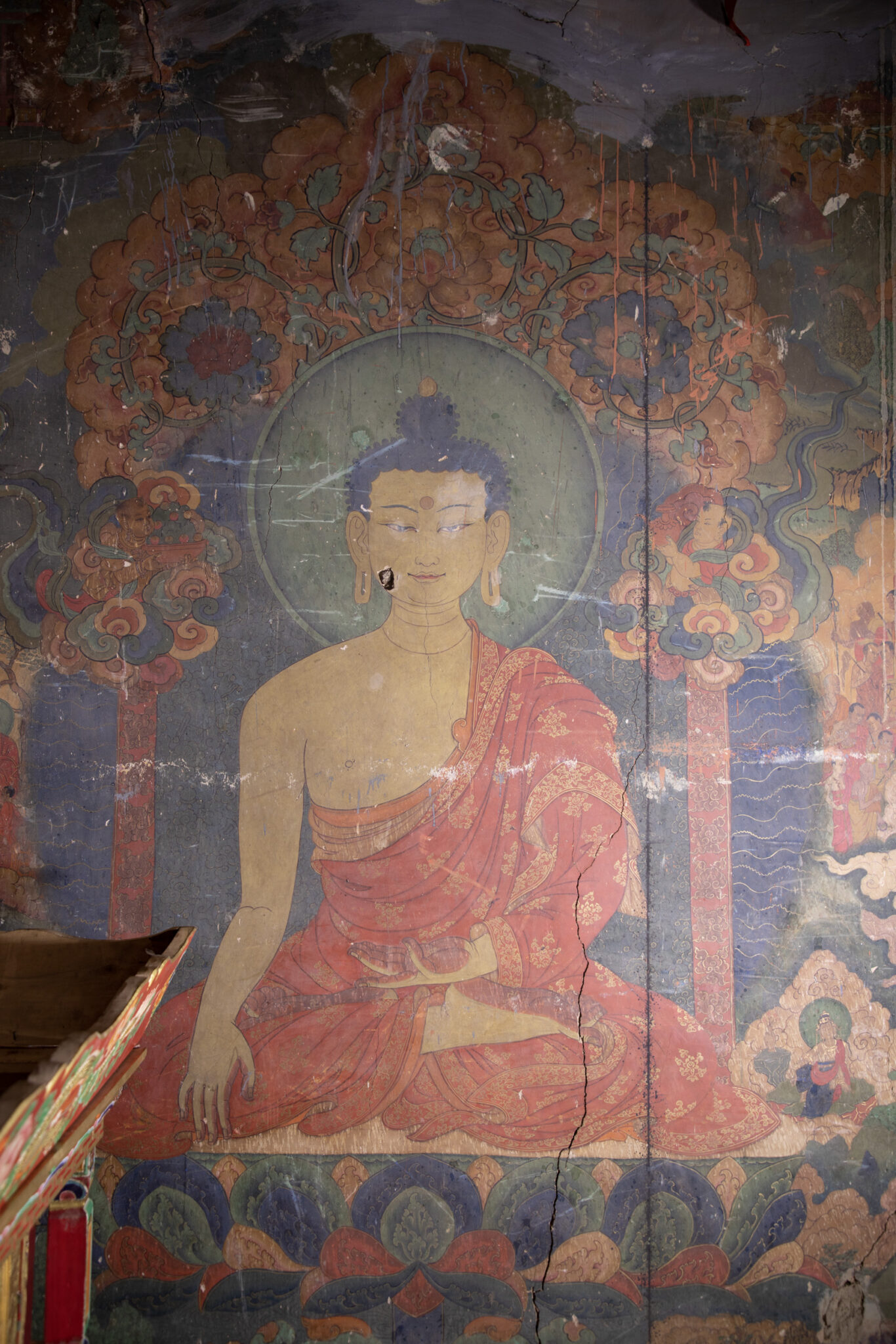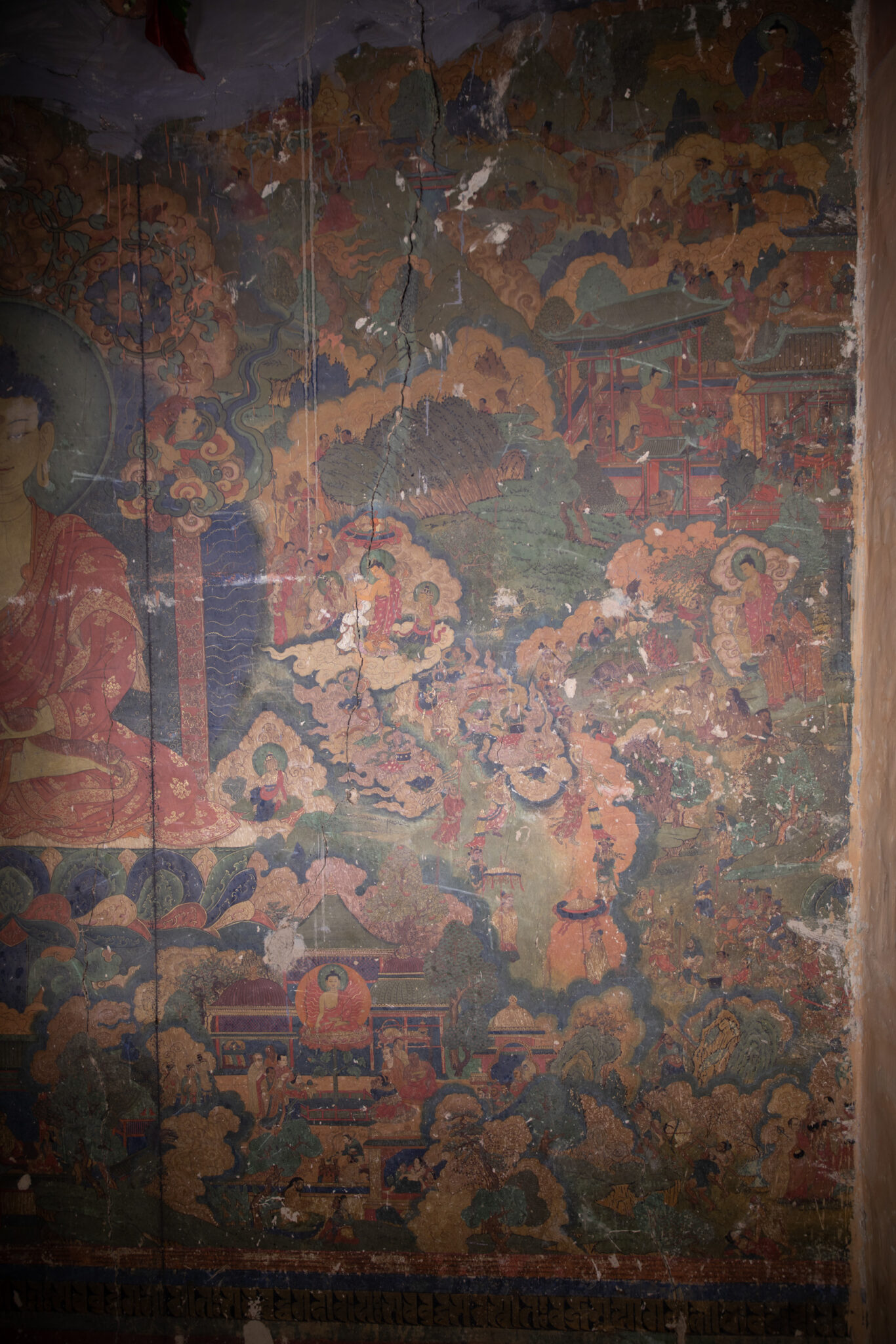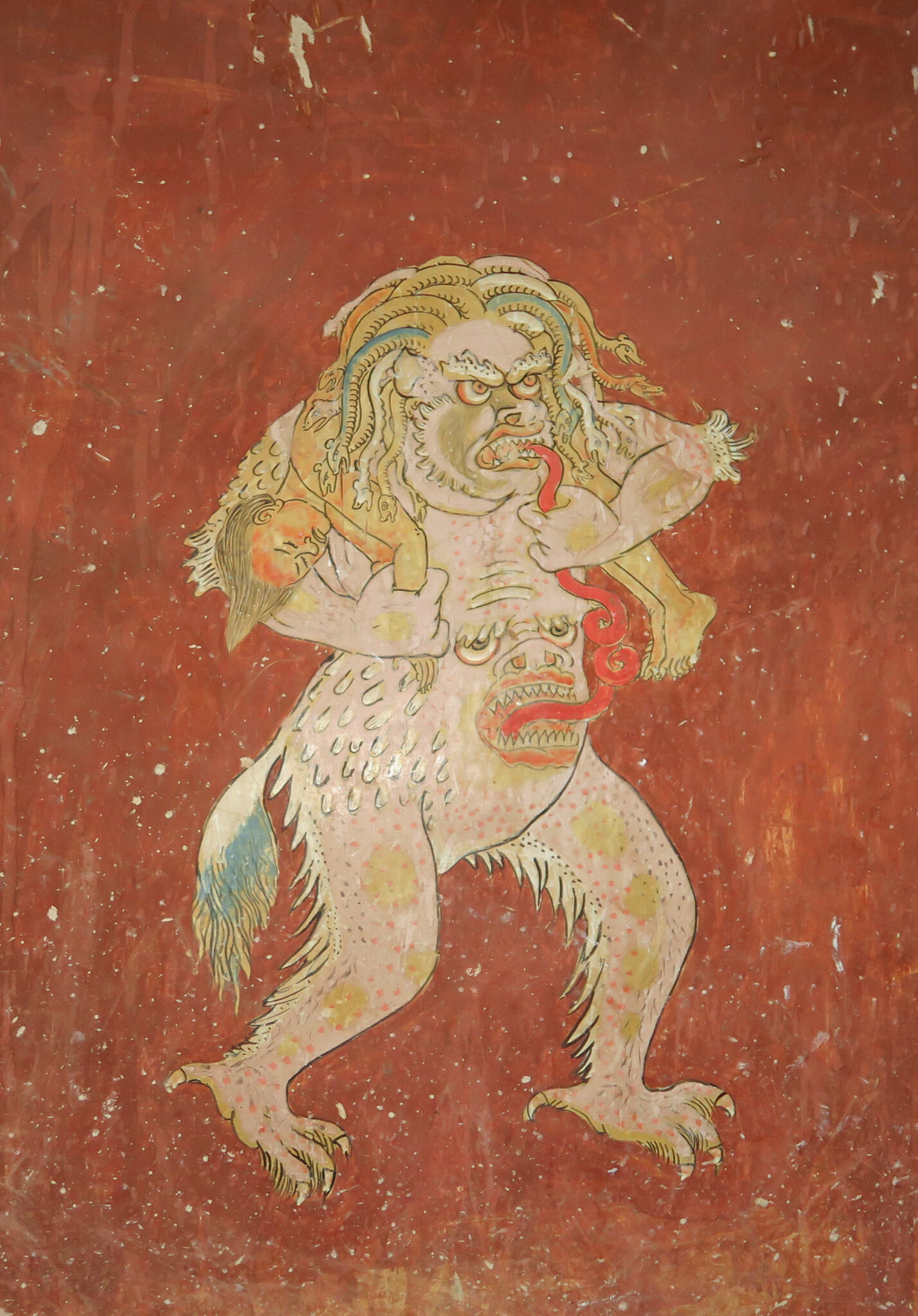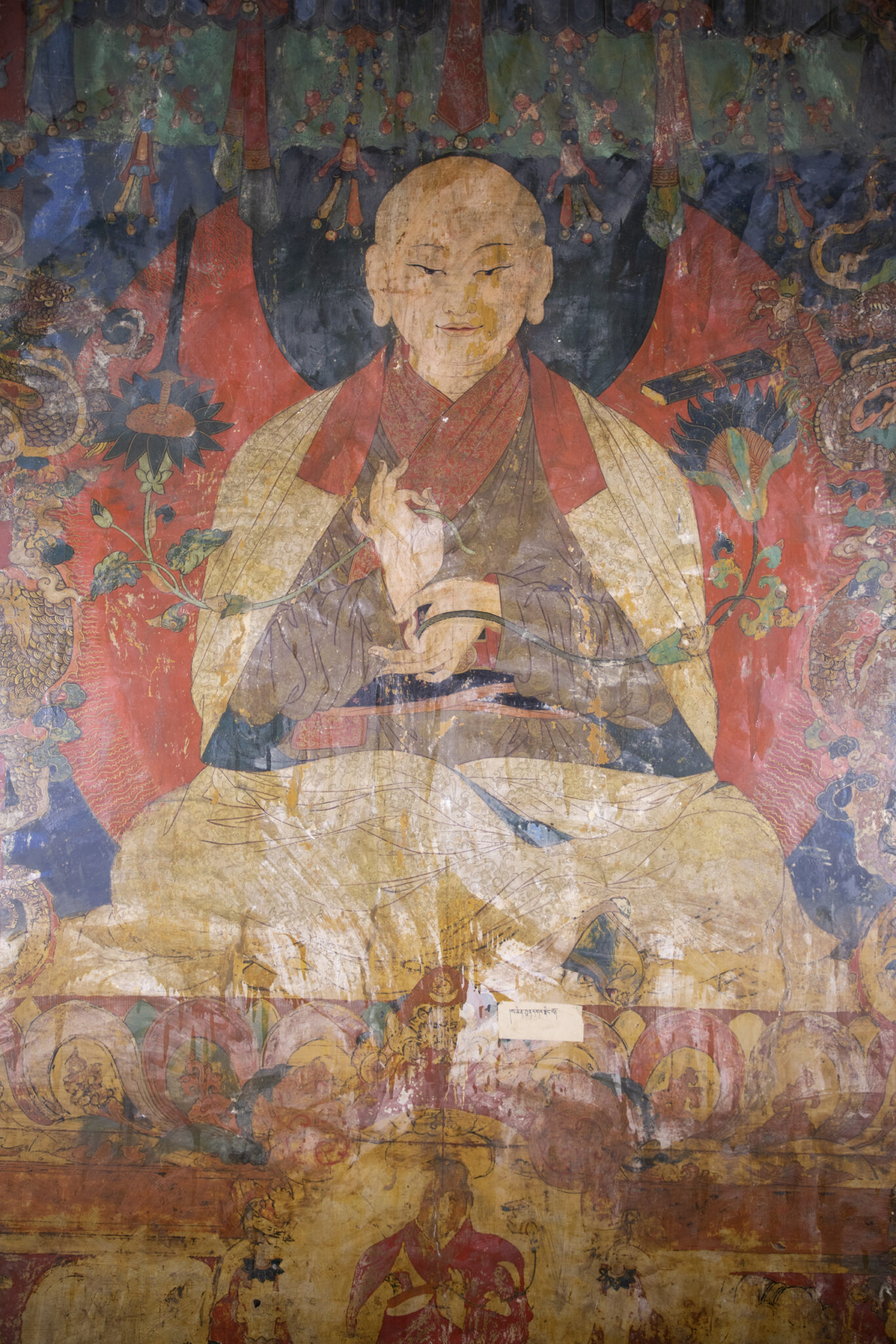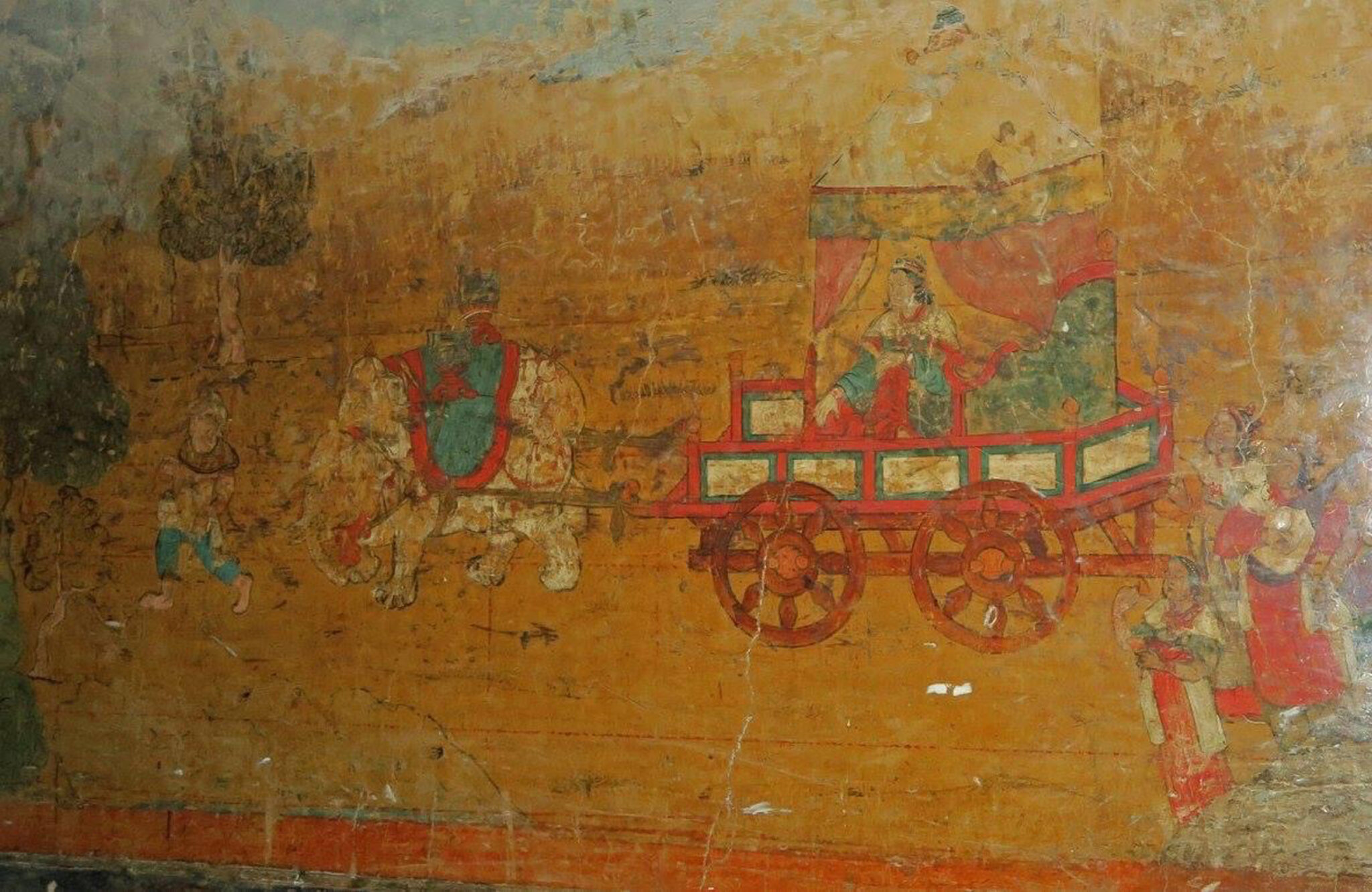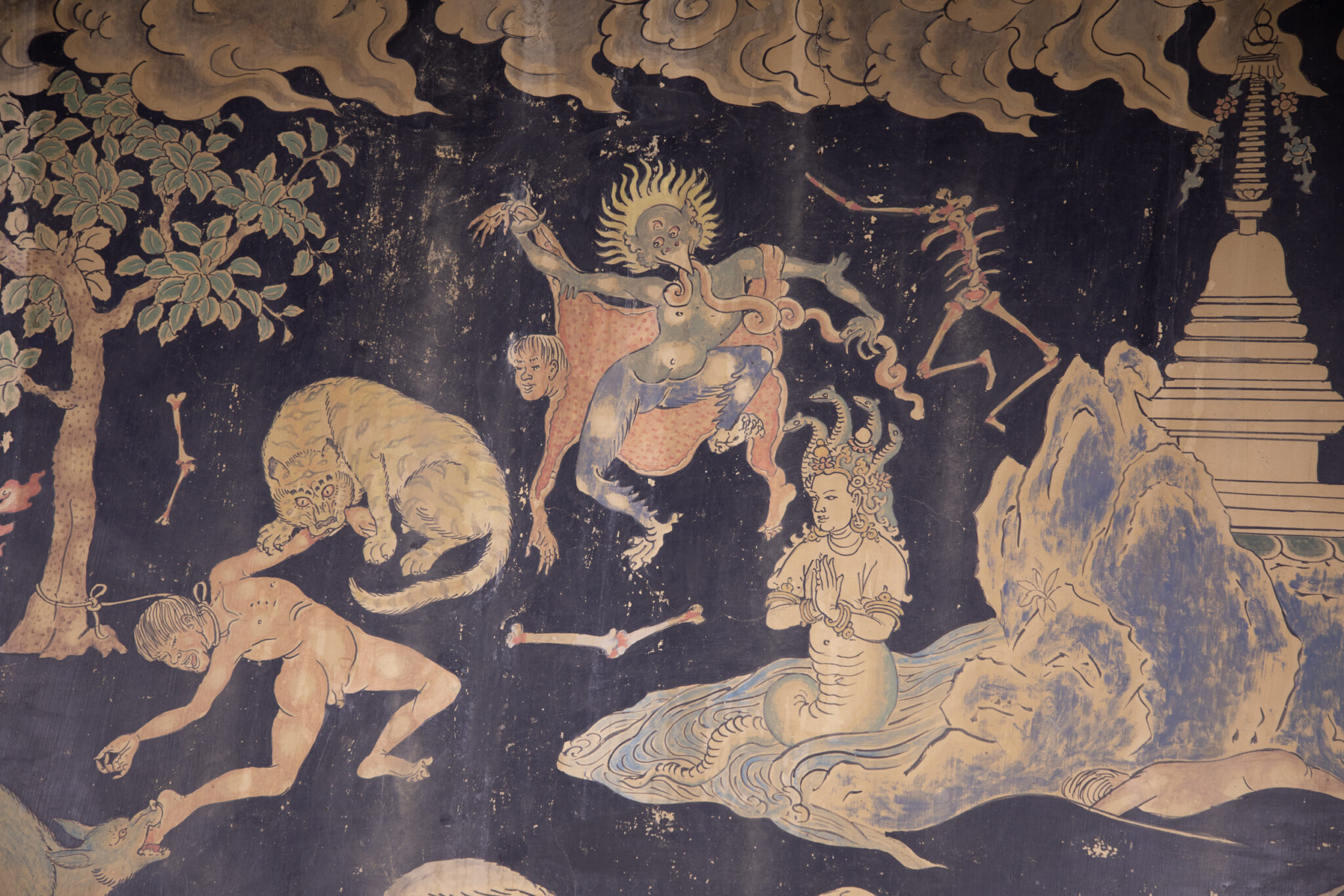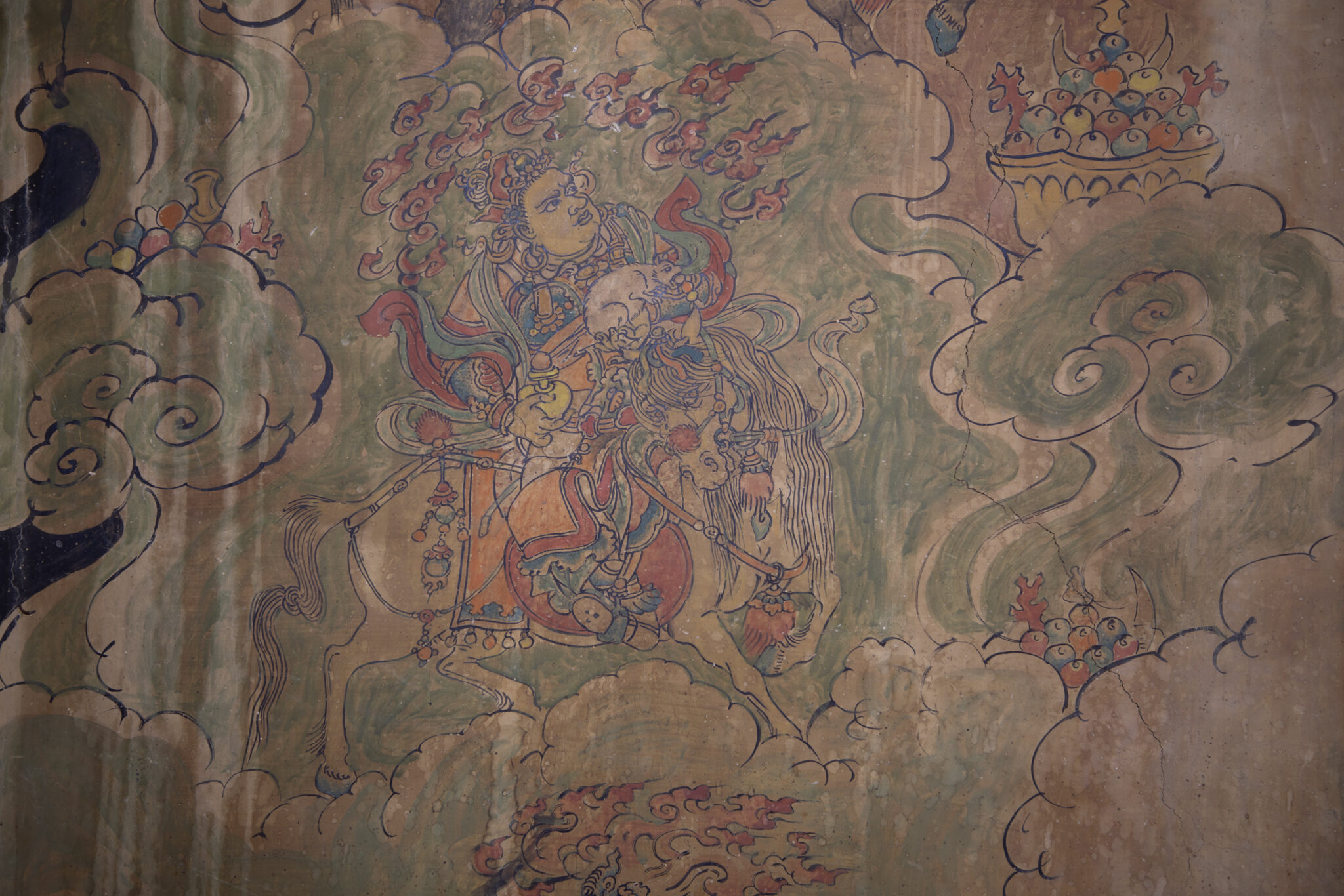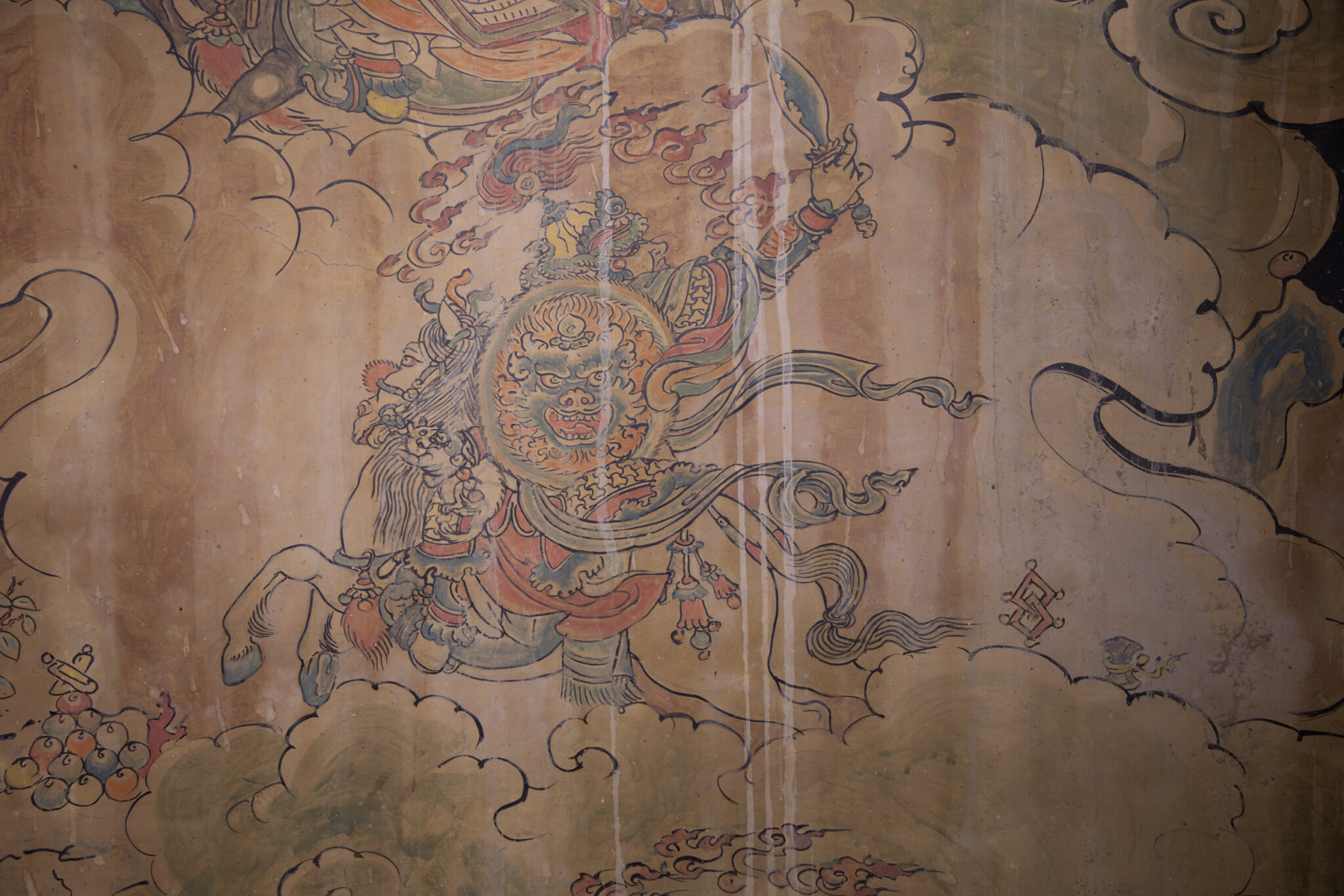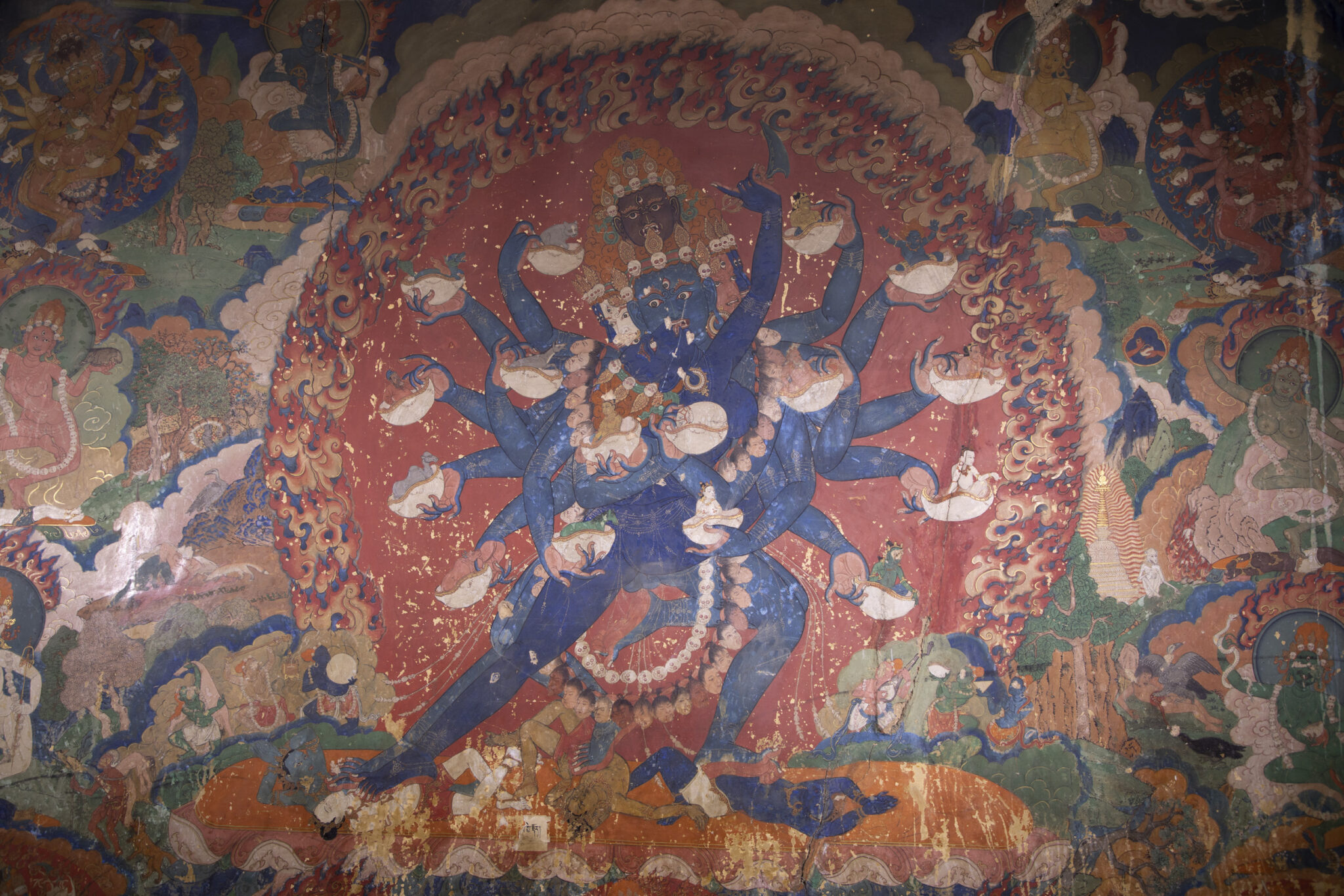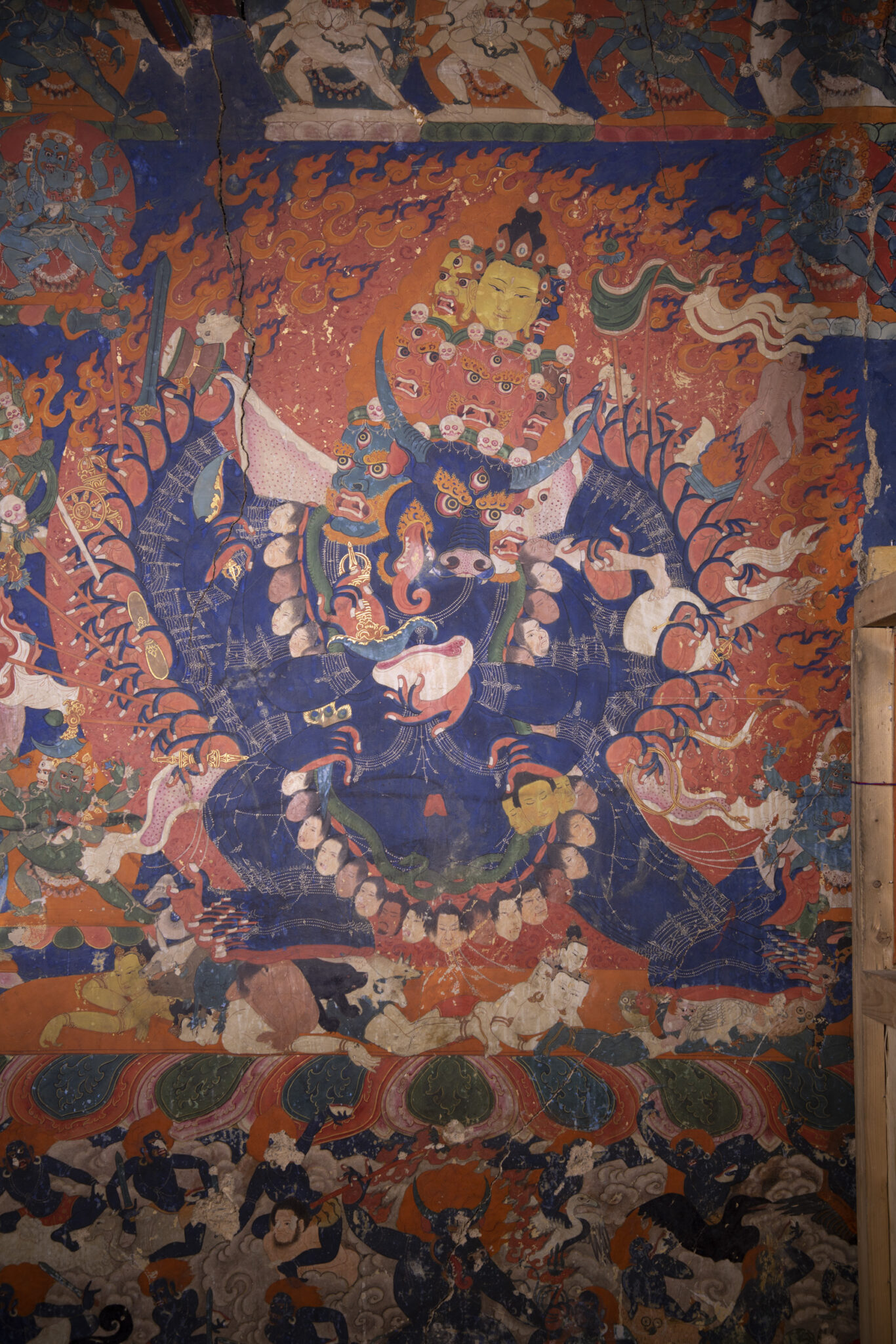Summary
Early Tibetan Buddhist art was largely derived from outside sources: India, Nepal, China, and Central Asia. According to traditional Tibetan histories, in the fifteenth century two artists named Khyentse Chenmo and Menla Dondrup created the first indigenous Tibetan styles, named after Tibetan artists and artistic centers. However, few works by these masters survive, and even the dates of their lives are debated. Artist and scholar Tsechang Penba Wangdu examines the murals of Gongkar Chode monastery, a rare example of works painted by the great founding artist Khyentse Chenmo himself.
Key Terms
Buddha Shakyamuni, or simply “The Buddha,” is an epithet for Siddhartha Gautama, the founder of the Buddhist religion. While the exact dates of Siddhartha’s life are debated, scholars generally place him in the sixth to fifth century BCE. According to early Buddhist narratives, Siddhartha was born a prince of the Shakya clan in what is now northern India and southern Nepal. Choosing to leave his palace and family for a life as a religious ascetic, Siddhartha achieved enlightenment while meditating under the Bodhi Tree. Siddhartha spent the rest of his life as a wandering teacher, gathering disciples to form the early Buddhist monastic community (sangha). Buddha Shakyamuni is revered all over the Buddhist world today.
iconometry
Iconometry means the measurement of icons or religious images. Especially in the Tibetan Buddhist tradition, detailed manuals exist that use precise proportional measurements to standardize the iconography of major deities, and maintain their correct proportions, regardless of scale. These proportions are commonly expressed visually in artist manuals as iconometric grids.
The Khyentse artistic tradition of painting and sculpture was founded by Khyentse Chenmo, an artist who worked in central Tibet during the fifteenth century. It is one of two new distinctively Tibetan artistic traditions which arose at this time, the Khyentse and Menla traditions, the first to be named after Tibetan artists, suggesting they are seen as indigenous artistic traditions. These painting styles (Khyenri and Menri) are both known for adopting Chinese landscape into their compositions. Gongkar Chode, near Lhasa, is the only monastery that preserves wall paintings by Khyentse Chenmo’s hand, which he created from 1464 to 1476. His paintings are known for their realism and great attention to detail, particularly in portraits and paintings of wild animals and birds, as well as his depiction of wrathful deities.
Lamdre is a set of teachings and practices foundational to the Sakya tradition of Tibetan Buddhism, which outlines the paths and results of studying philosophical teachings and actualizing Buddhist practices. Although largely focused on Hevajra Tantra, the Lamdre teachings begin with the Mahayana path and Madhyamaka philosophy, which holds that samsara and nirvana are aspects of the same reality. More advanced Lamdre teachings involve the initiations and deity yoga of the Hevajra Tantra. The depiction of Lamdre lineage masters, teachings, and initiations passed unbroken from teacher to disciple are important aspect of Sakya religious art.
Menla artistic tradition was founded by Menla Dondrup, an artist who worked in central Tibet during the fifteenth century. It is one of two new distinctively Tibetan artistic traditions which arose at this time, the Menla and Khyentse traditions, named after Tibetan artists. These painting styles (Menri and Khyenri) are known for adopting Chinese landscape into their compositions. Menri painting is known to excel in its depiction of peaceful deities. While paintings by Menla Dondrup’s own hand have yet to be reliably identified, a handbook of iconometry, The Wish-Fulfilling Jewel, is attributed to him. The New Menri Style was established by the artist Choying Gyatso (active ca.1640s–1660s) in the court of the Fourth Panchen Lama. Choying Gyatso’s compositions are well known through woodblock prints, characterized by dynamically postured figures set in dramatic Chinese-inspired landscapes.
Tibetan Buddhism
Historically, Tibetan Buddhism refers to those Buddhist traditions that use Tibetan as a ritual language. It is practiced in Tibet, Mongolia, Bhutan, Ladakh, and among certain groups in Nepal, China, and Russia and has an international following. Buddhism was introduced to Tibet in two waves, first when rulers of the Tibetan Empire (seventh to ninth centuries CE), embraced the Buddhist faith as their state religion, and during the second diffusion (late tenth through thirteenth centuries), when monks and translators brought in Buddhist culture from India, Nepal, and Central Asia. As a result, the entire Buddhist canon was translated into Tibetan, and monasteries grew to become centers of intellectual, cultural, and political power. From the end of the twelfth century, Tibetans were exporting their own Buddhist traditions abroad. Tibetan Buddhism integrates Mahayana teachings with the esoteric practices of Vajrayana, and includes those developed in Tibet, such as Dzogchen, as well as indigenous Tibetan religious practices focused on local gods. Historically major traditions of Tibetan Buddhism are Nyingma, Kagyu, Sakya, and Geluk.
